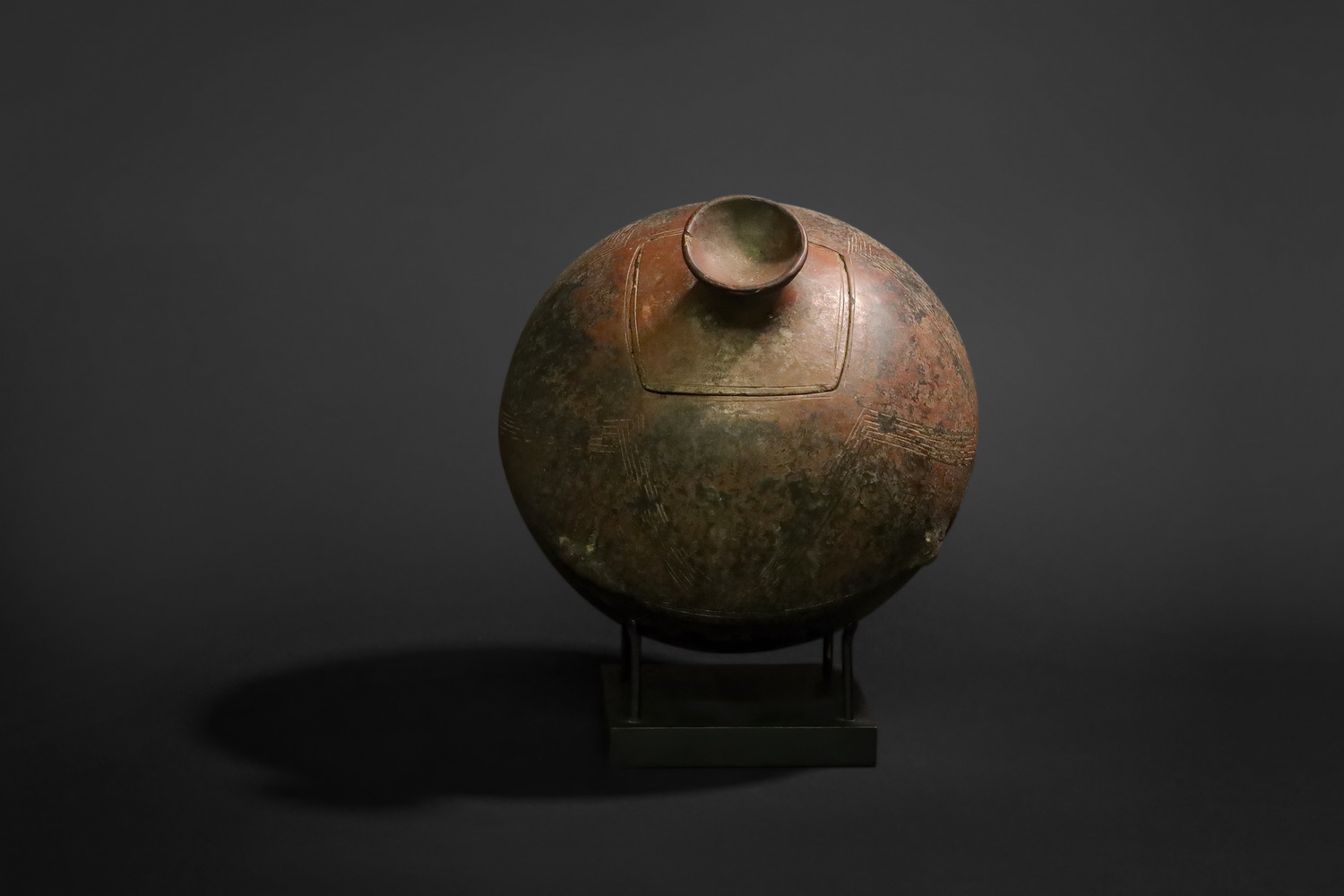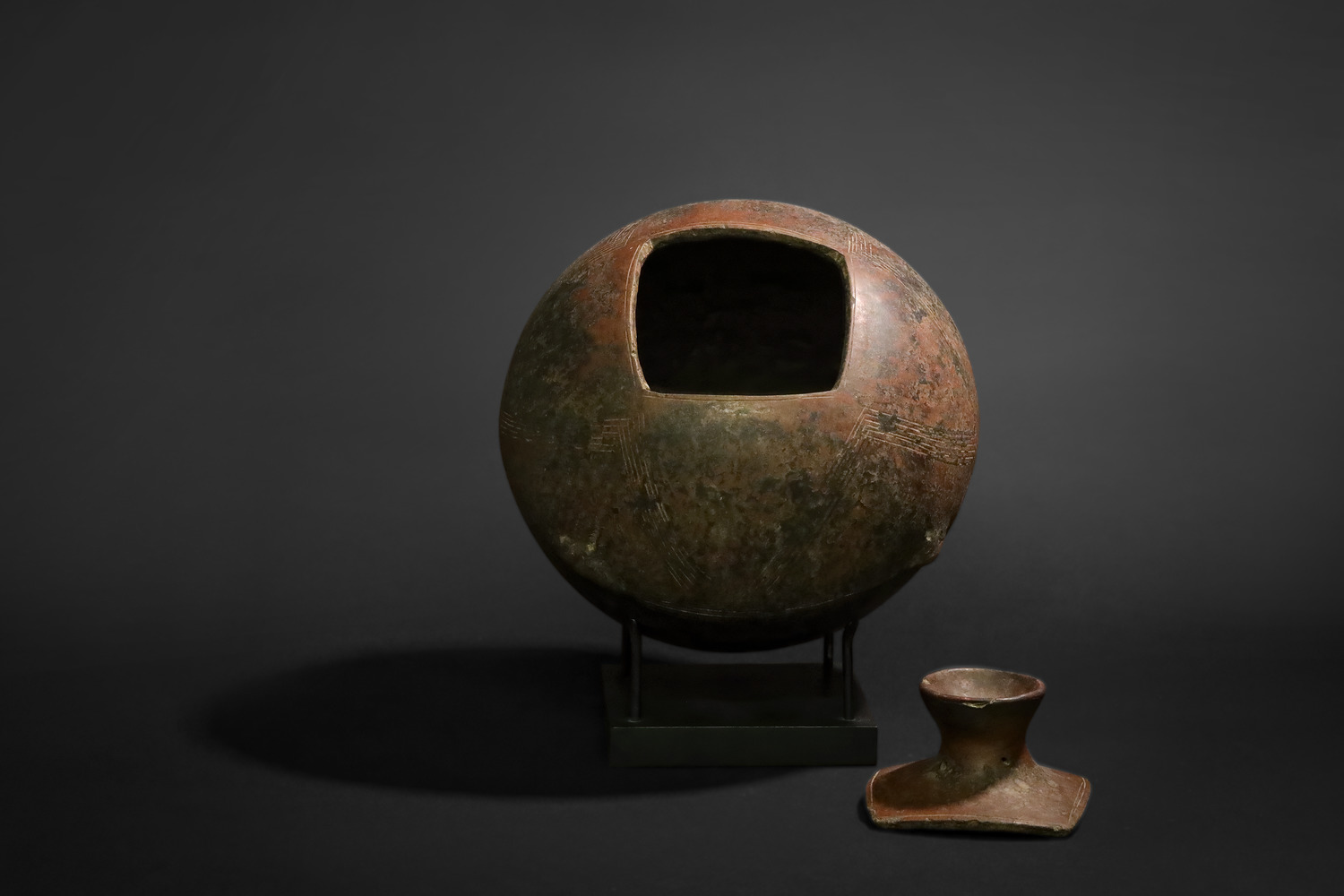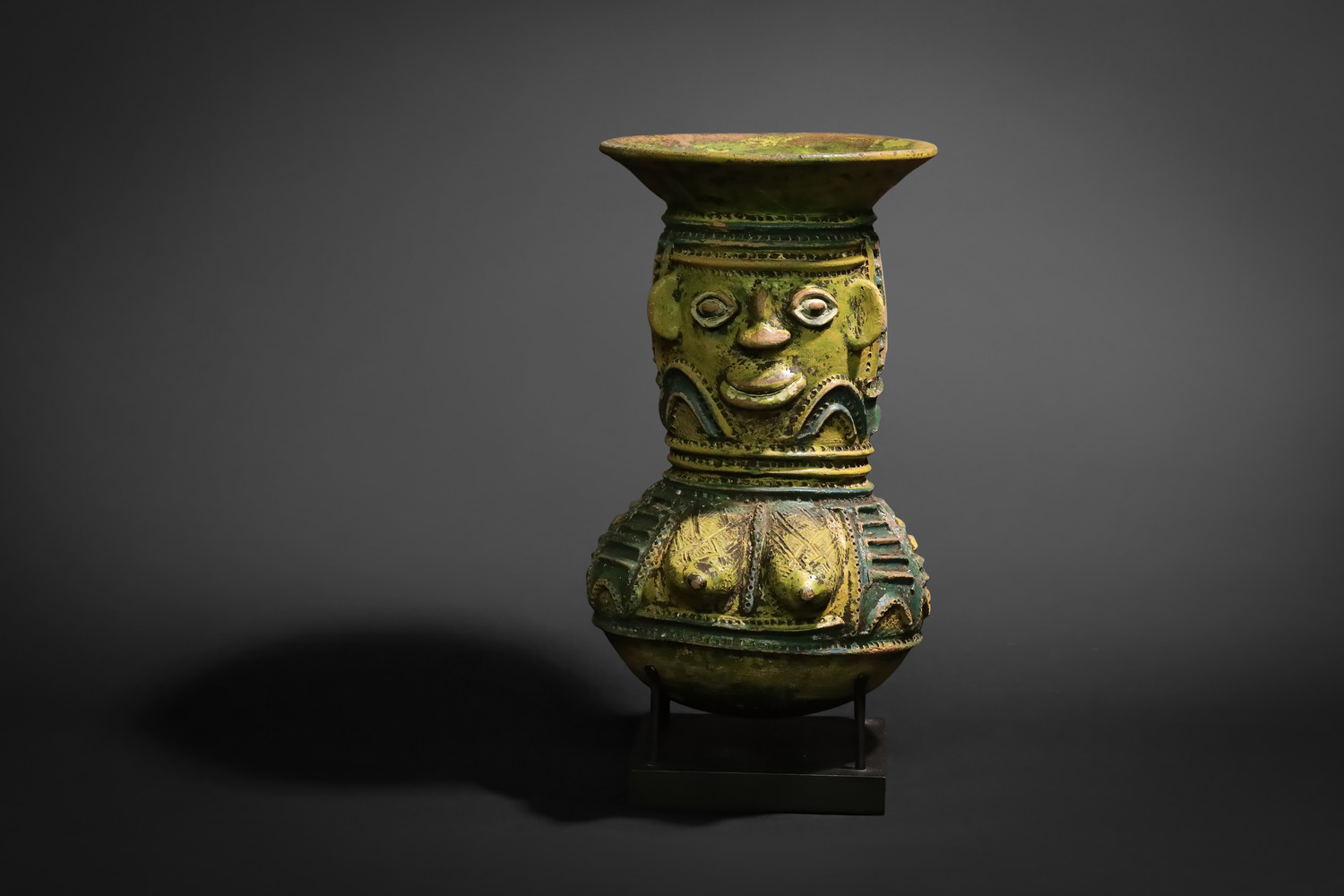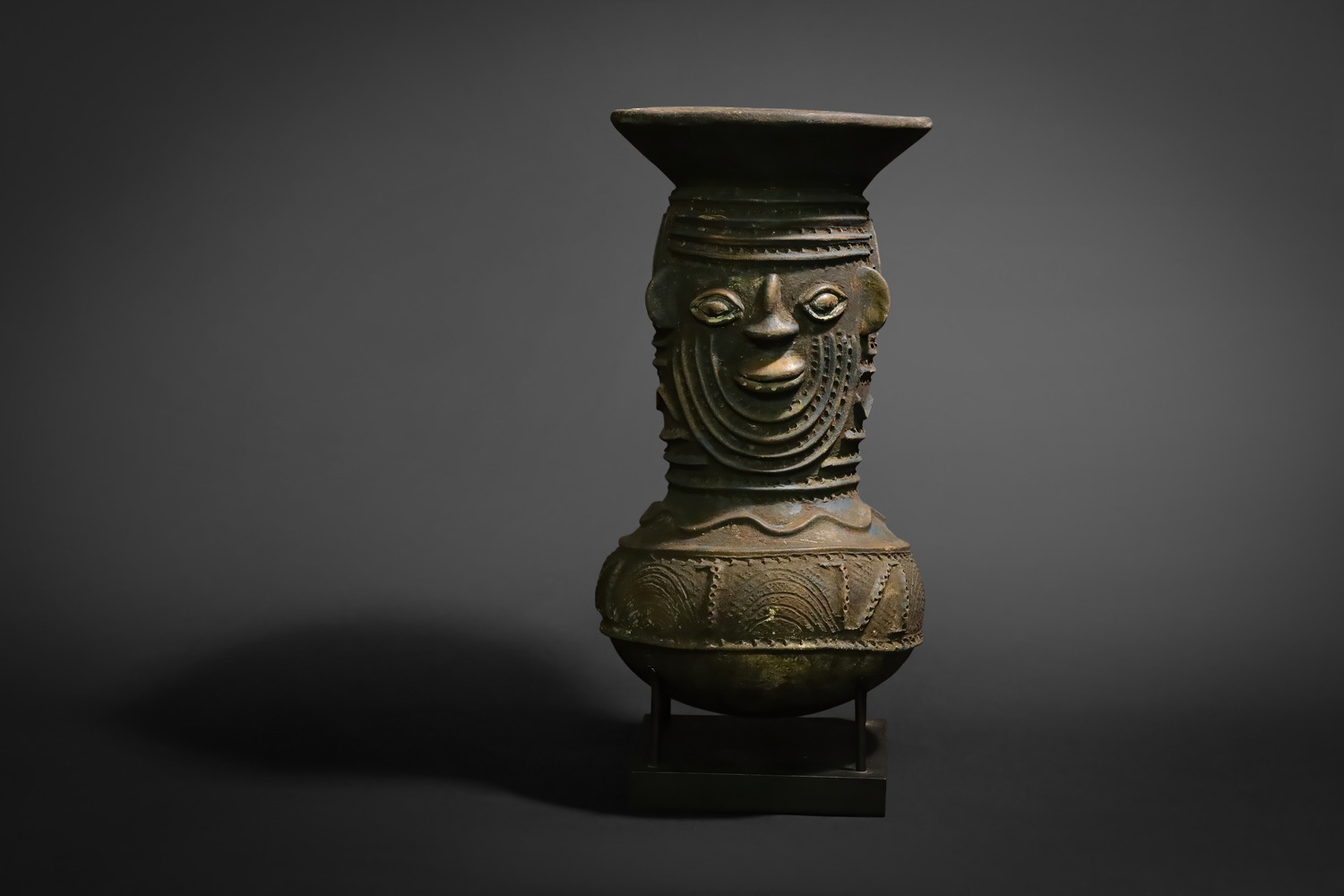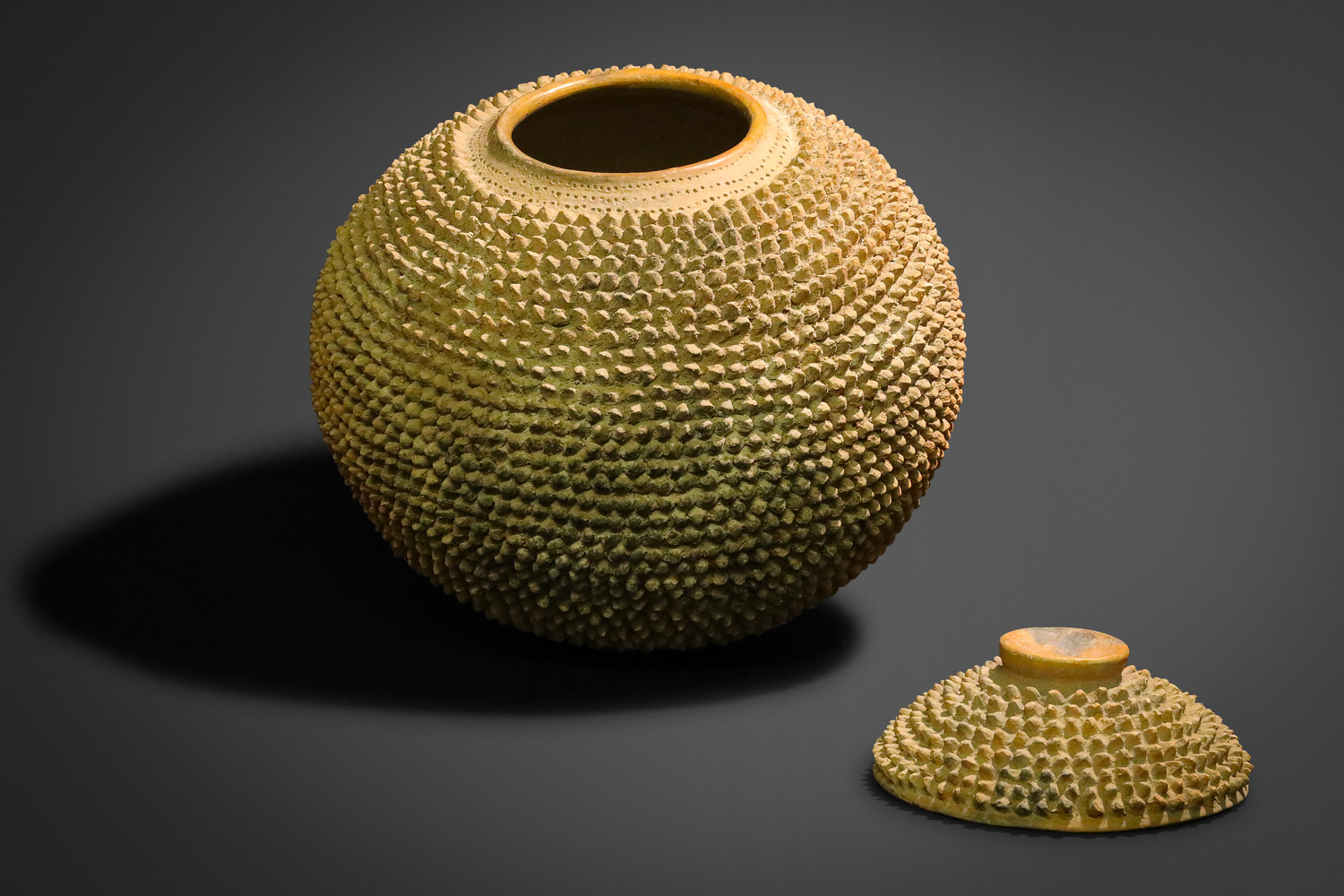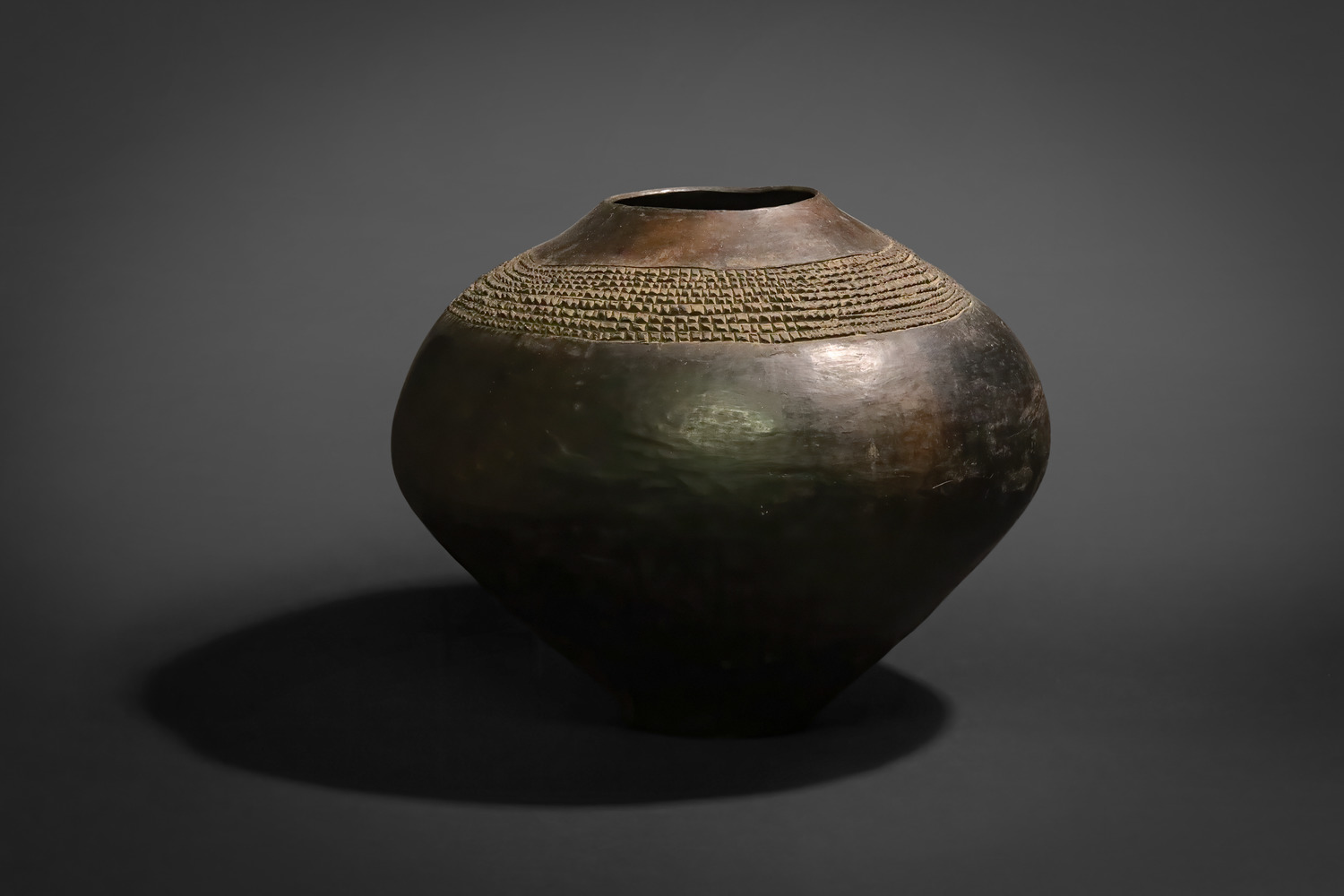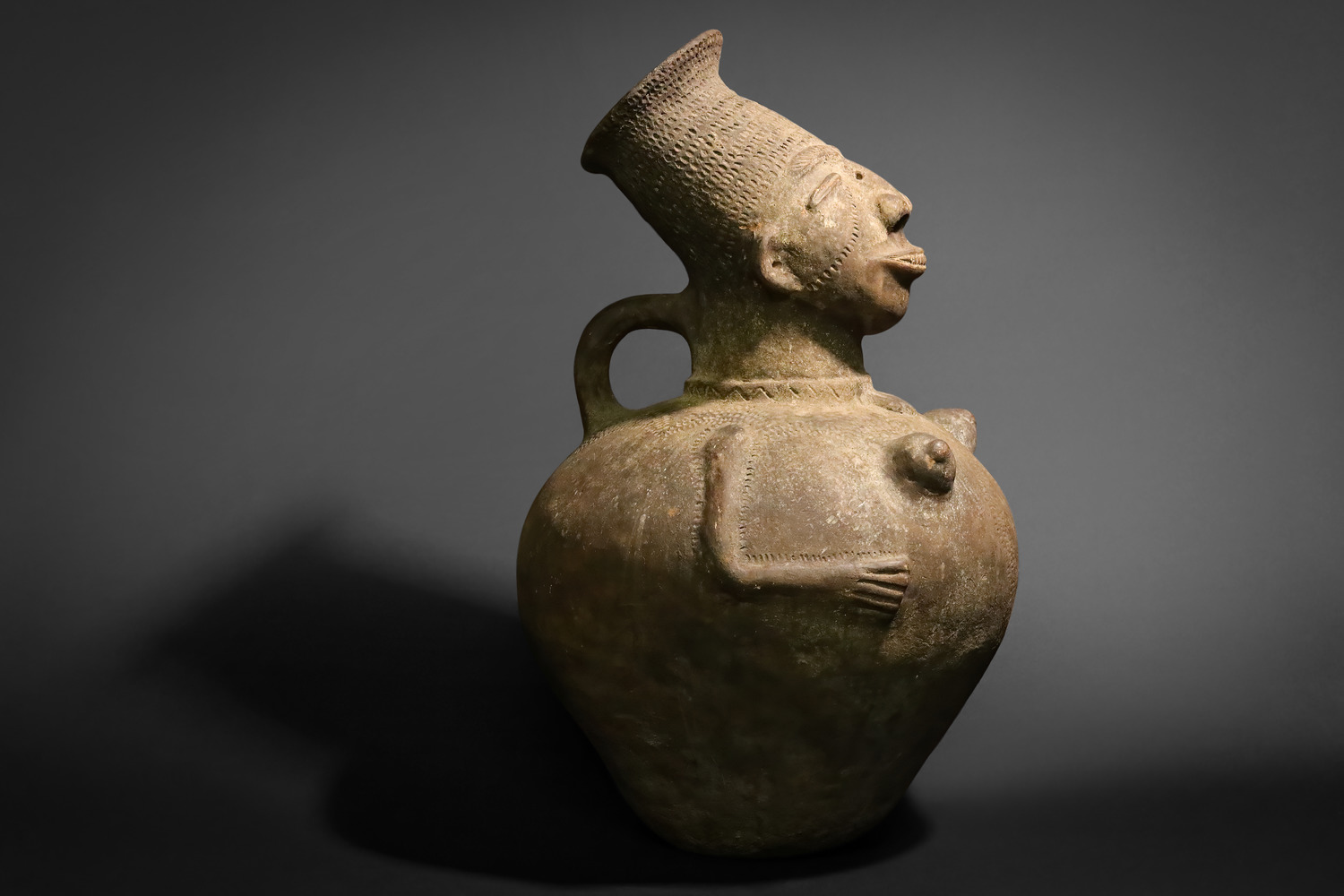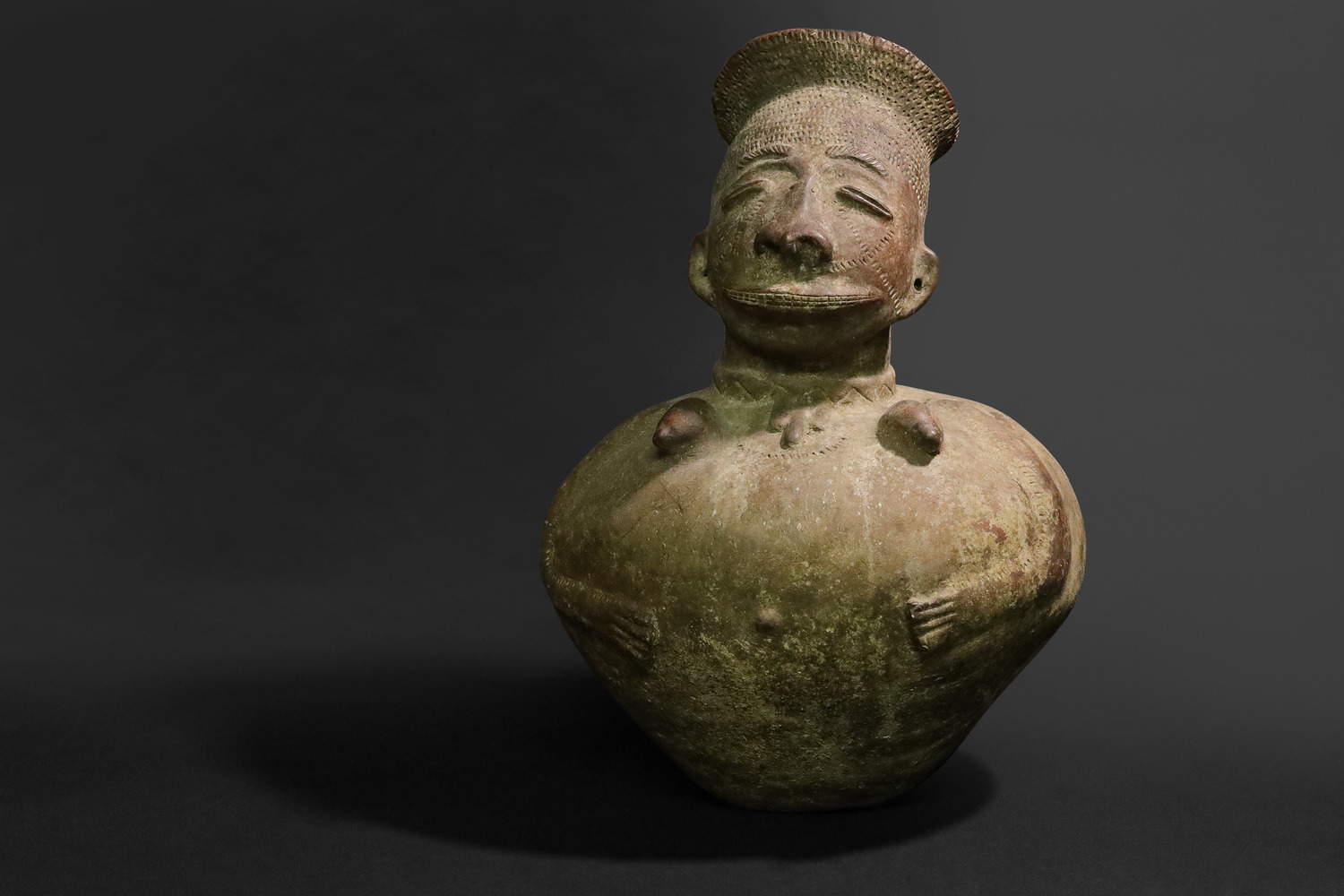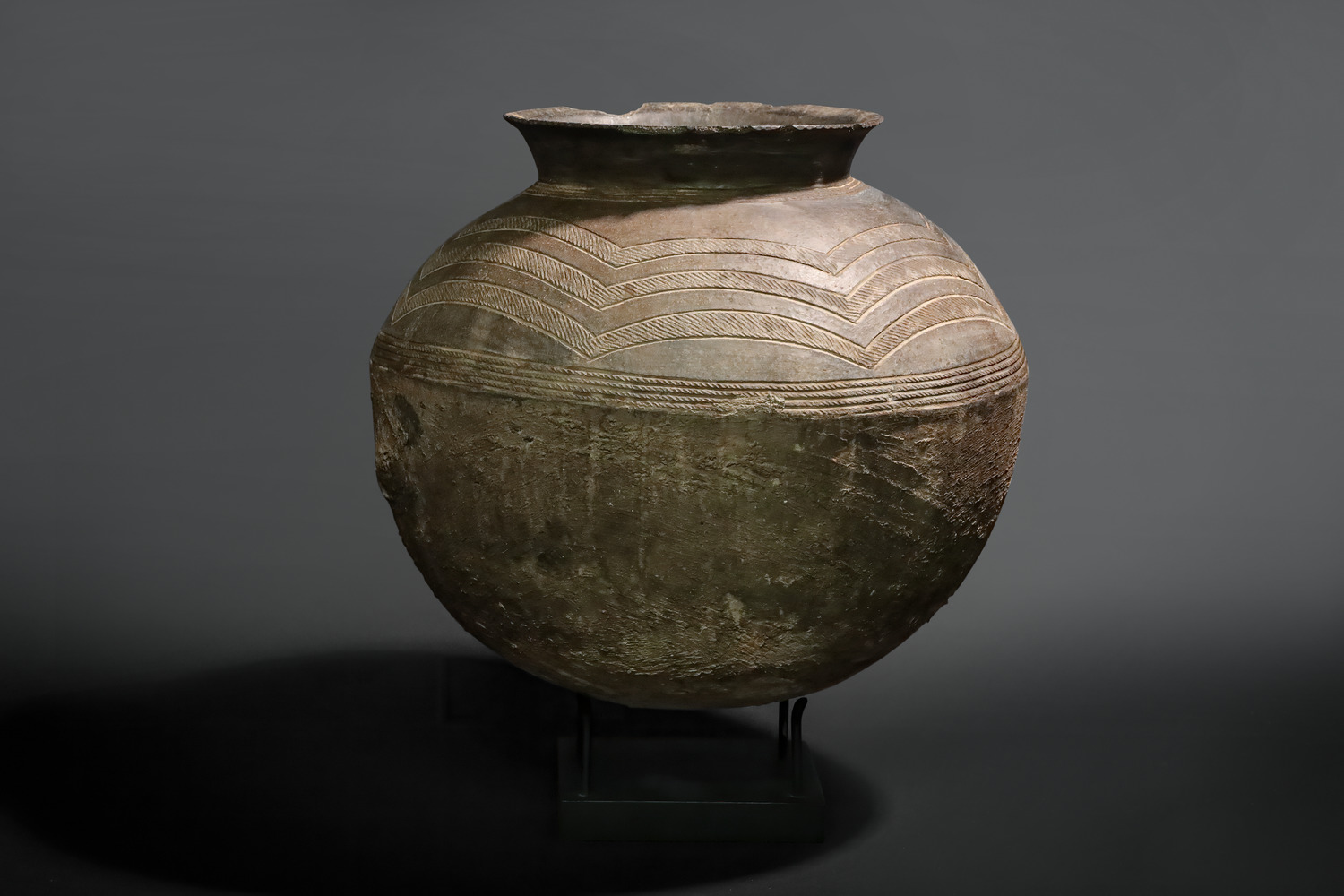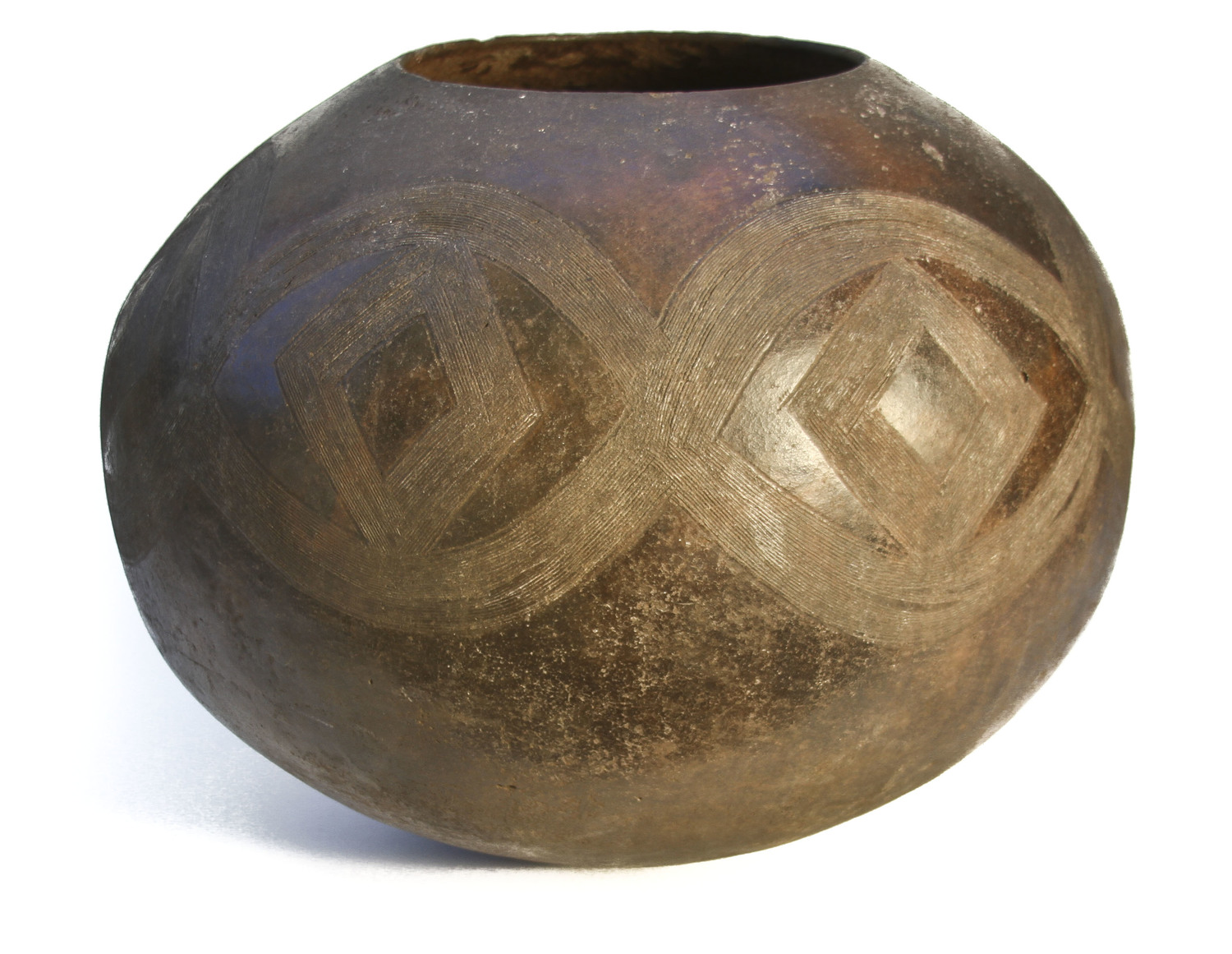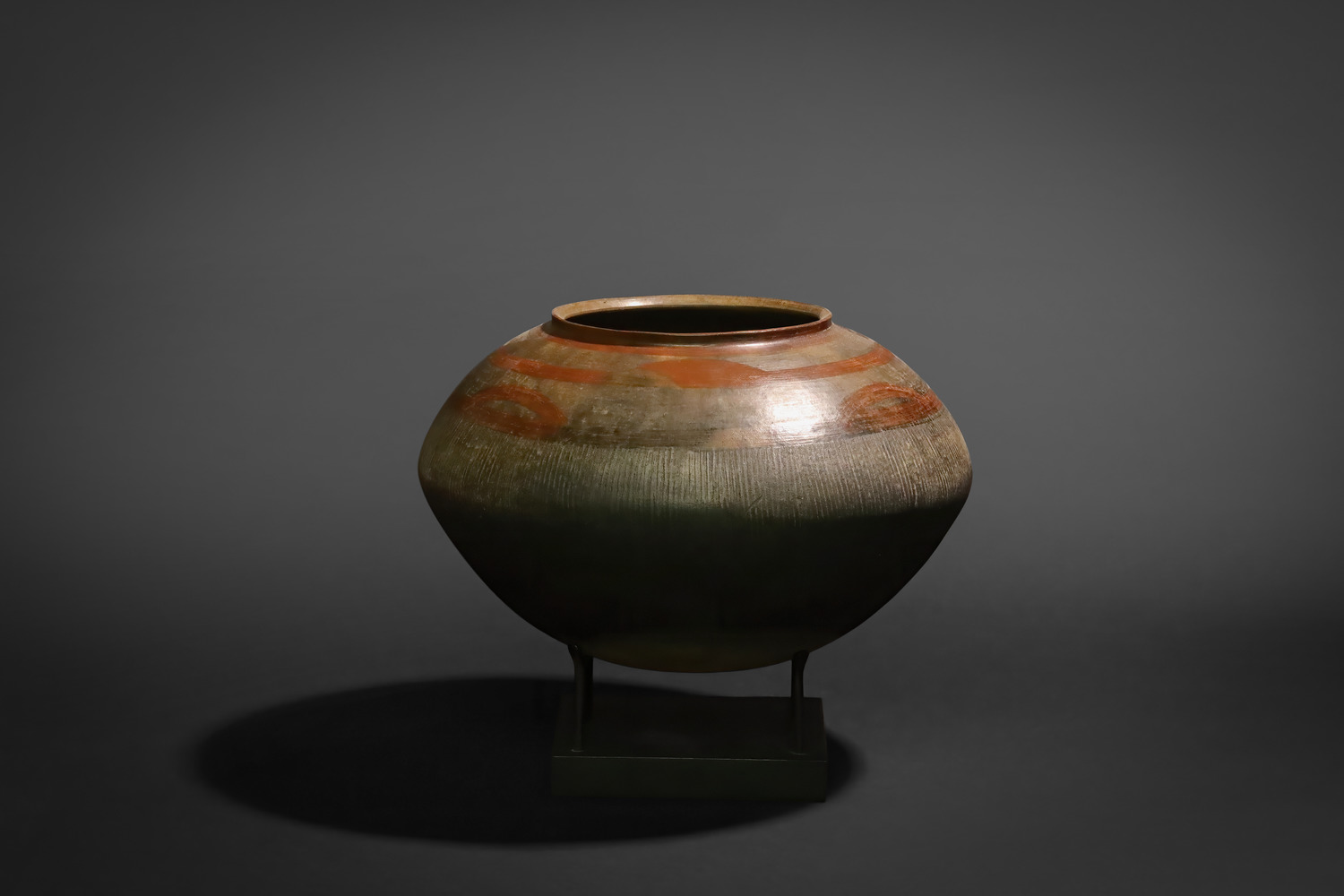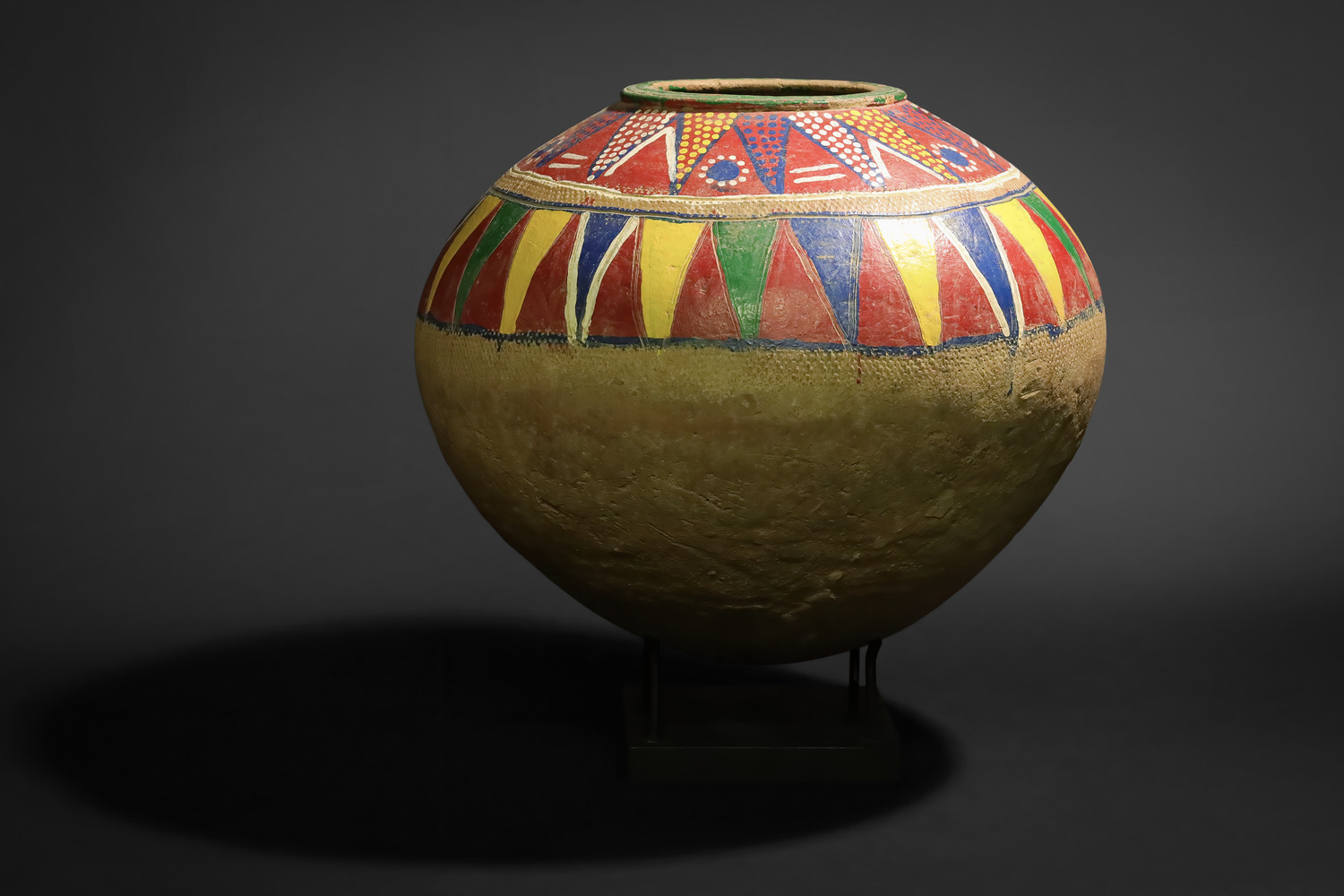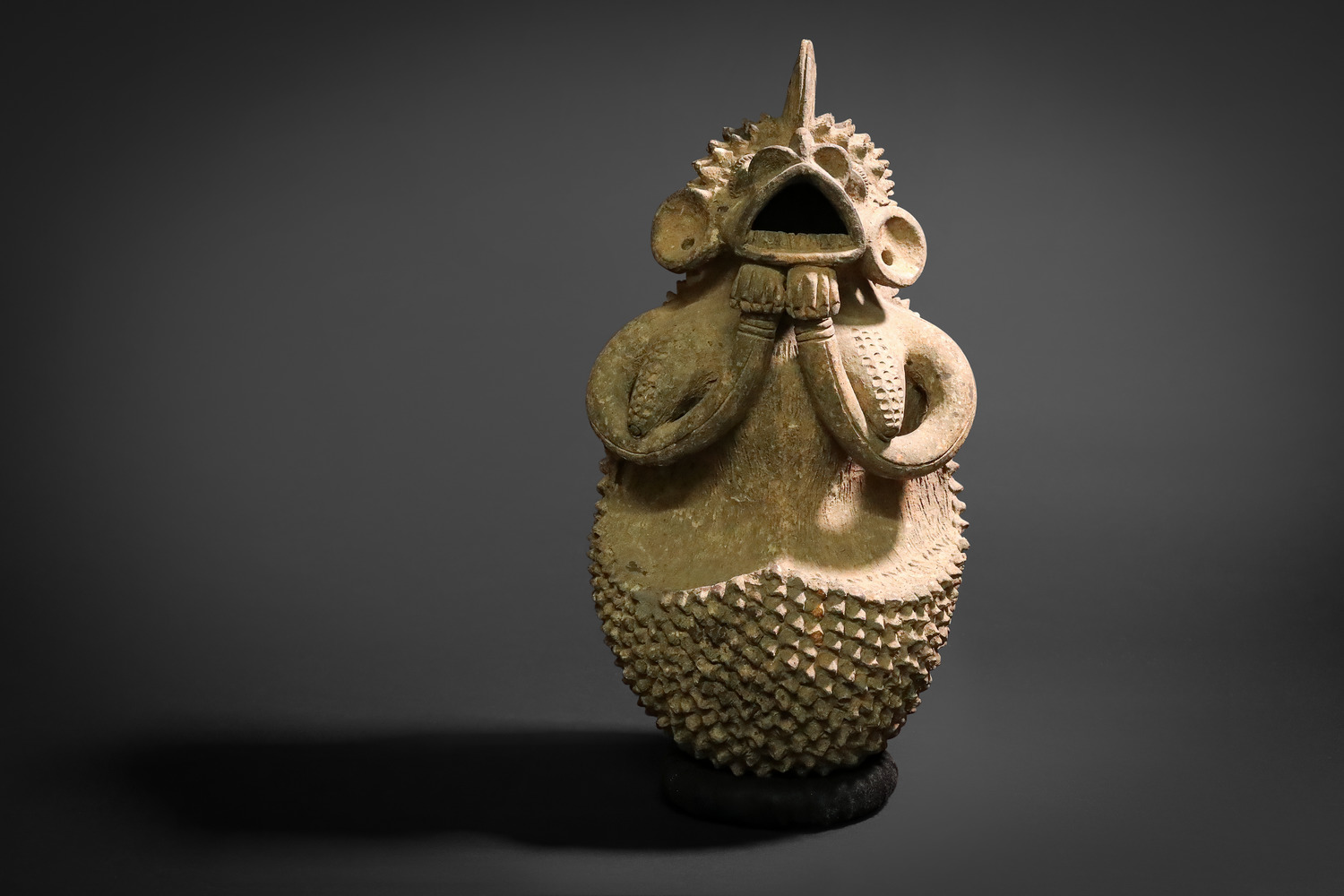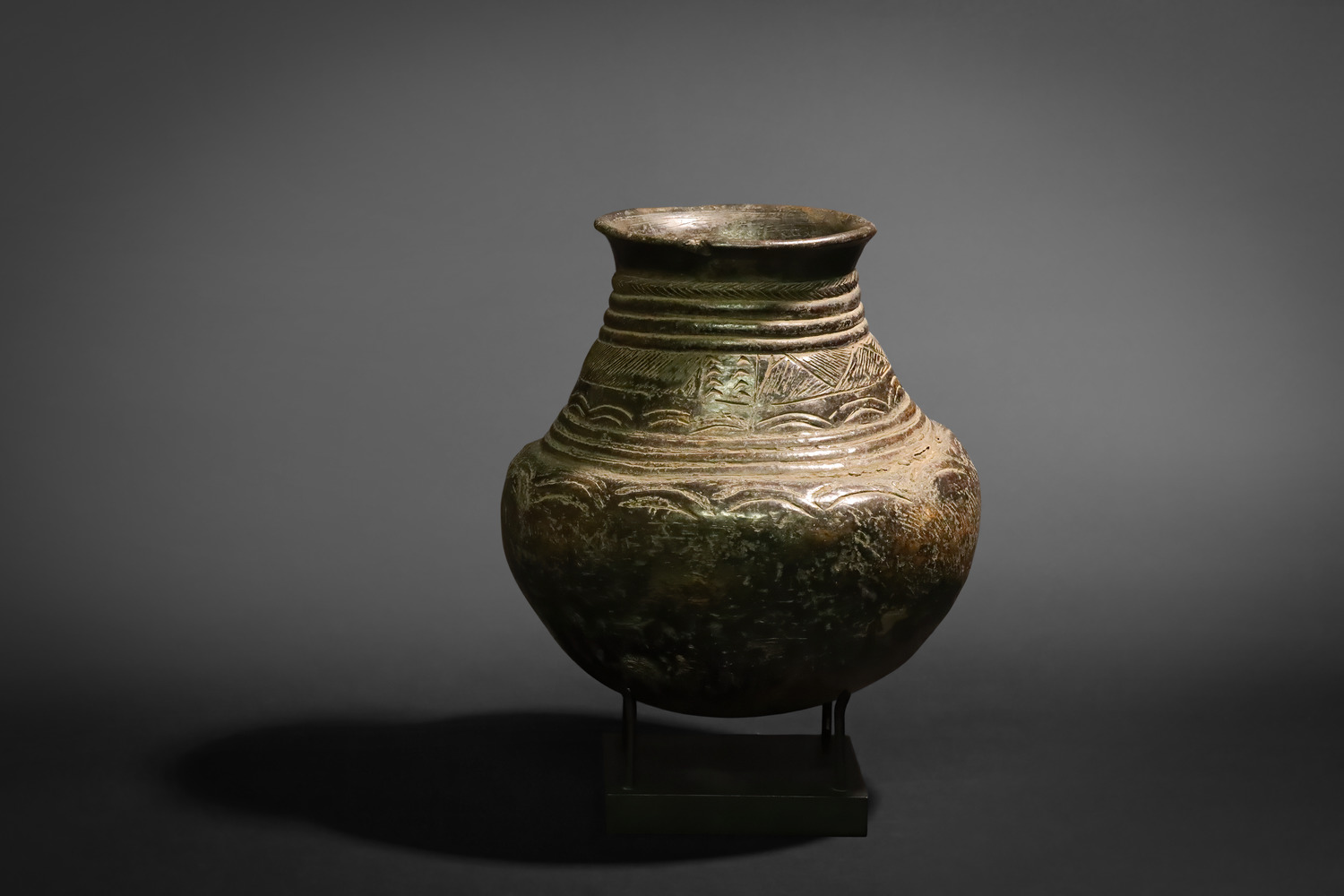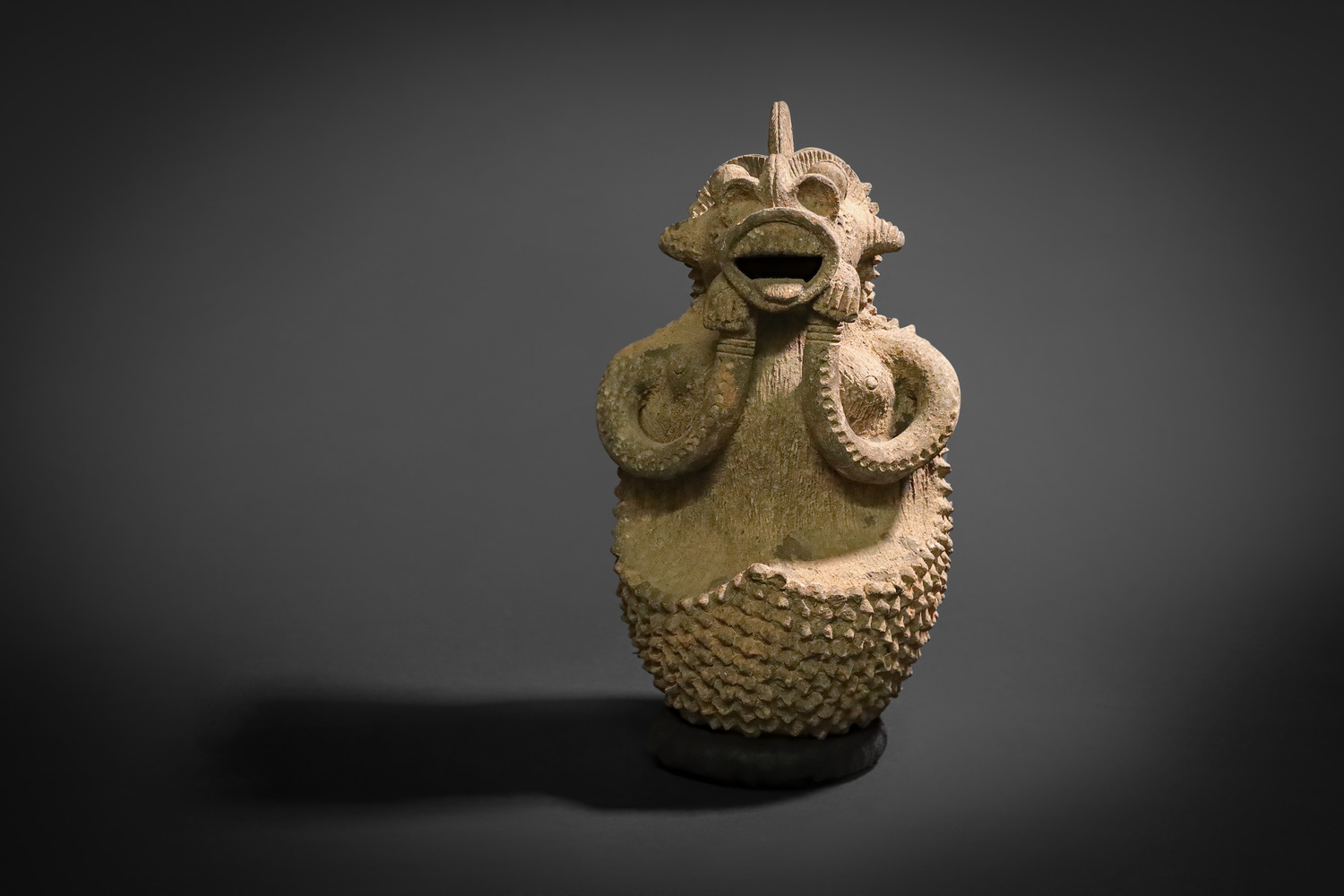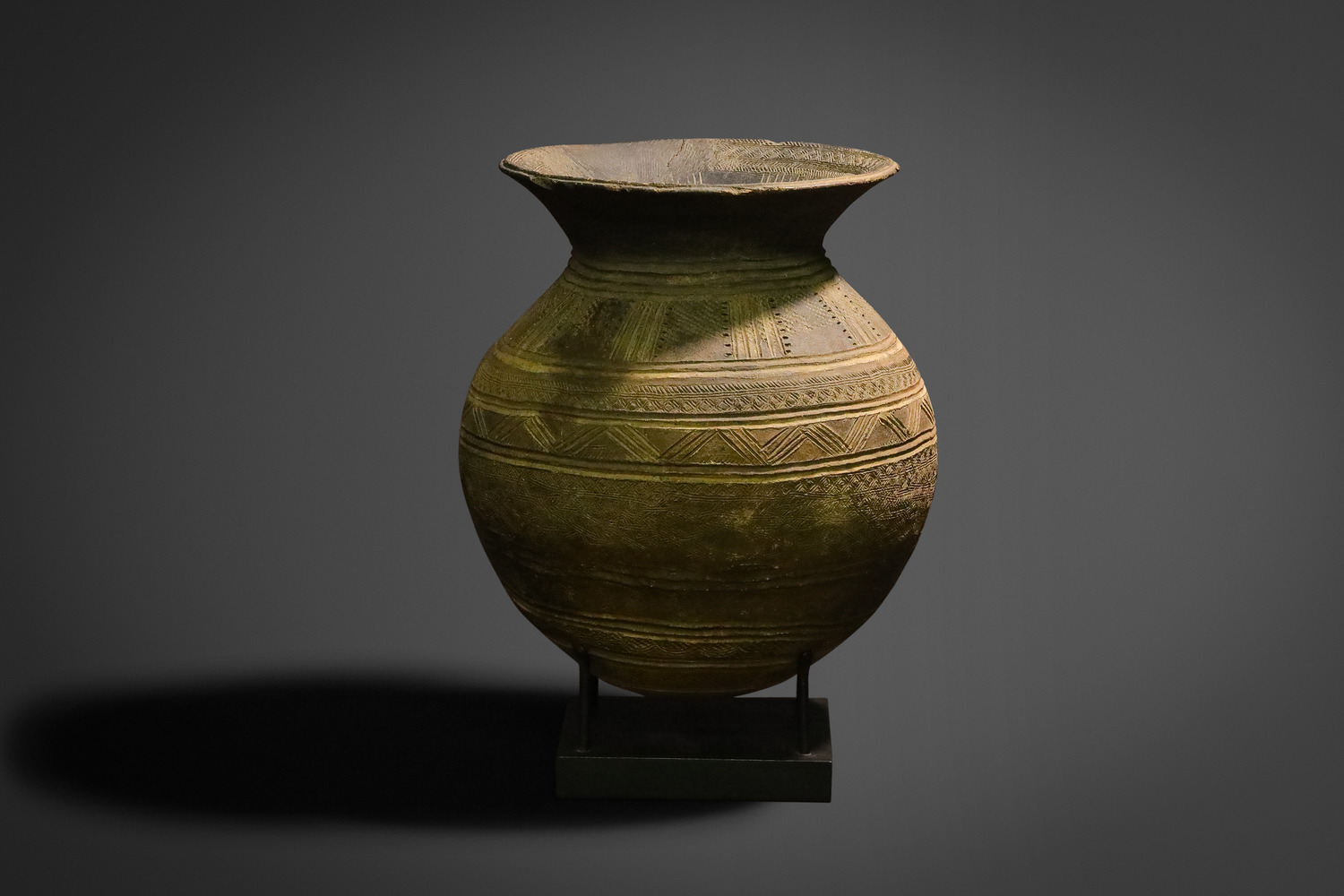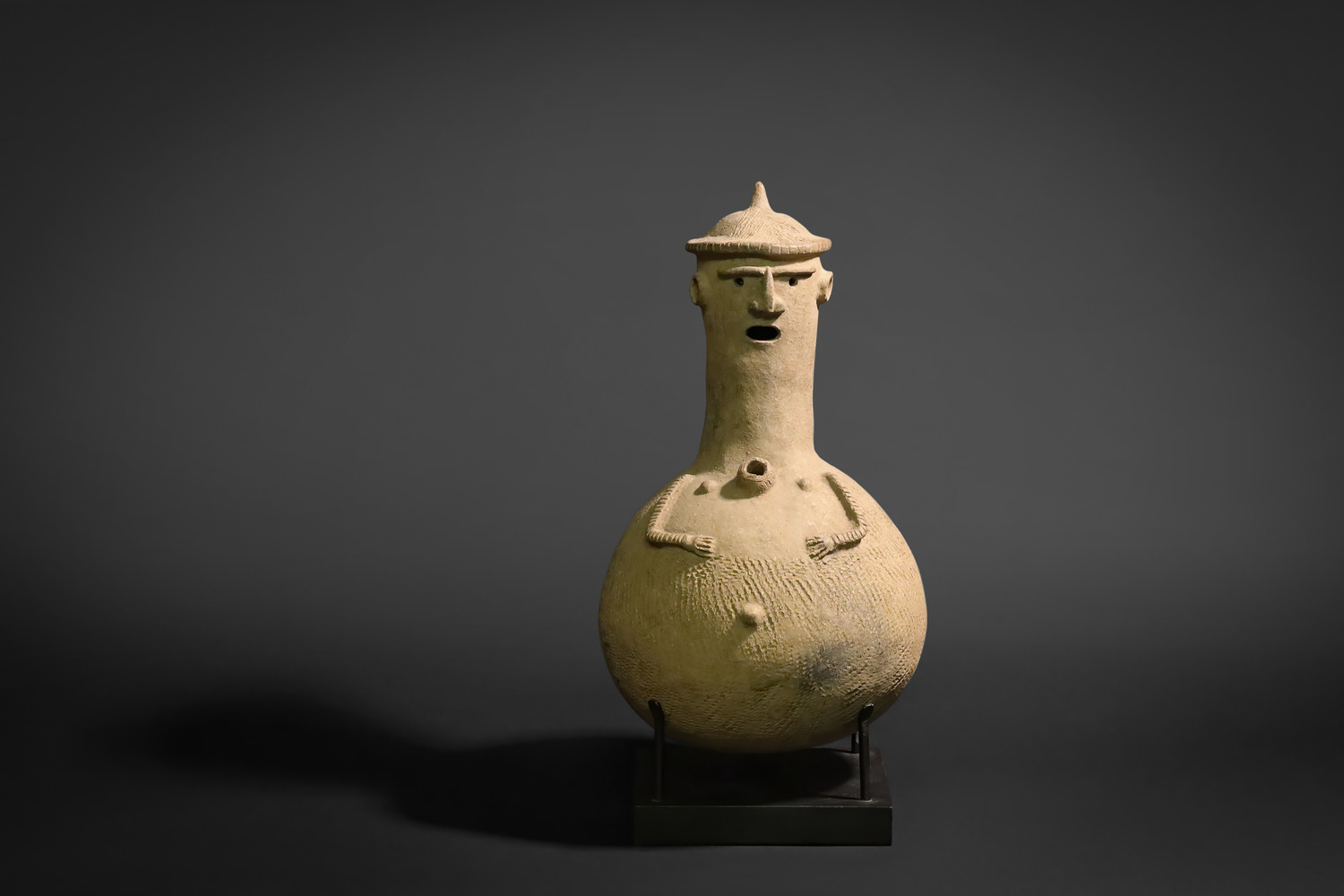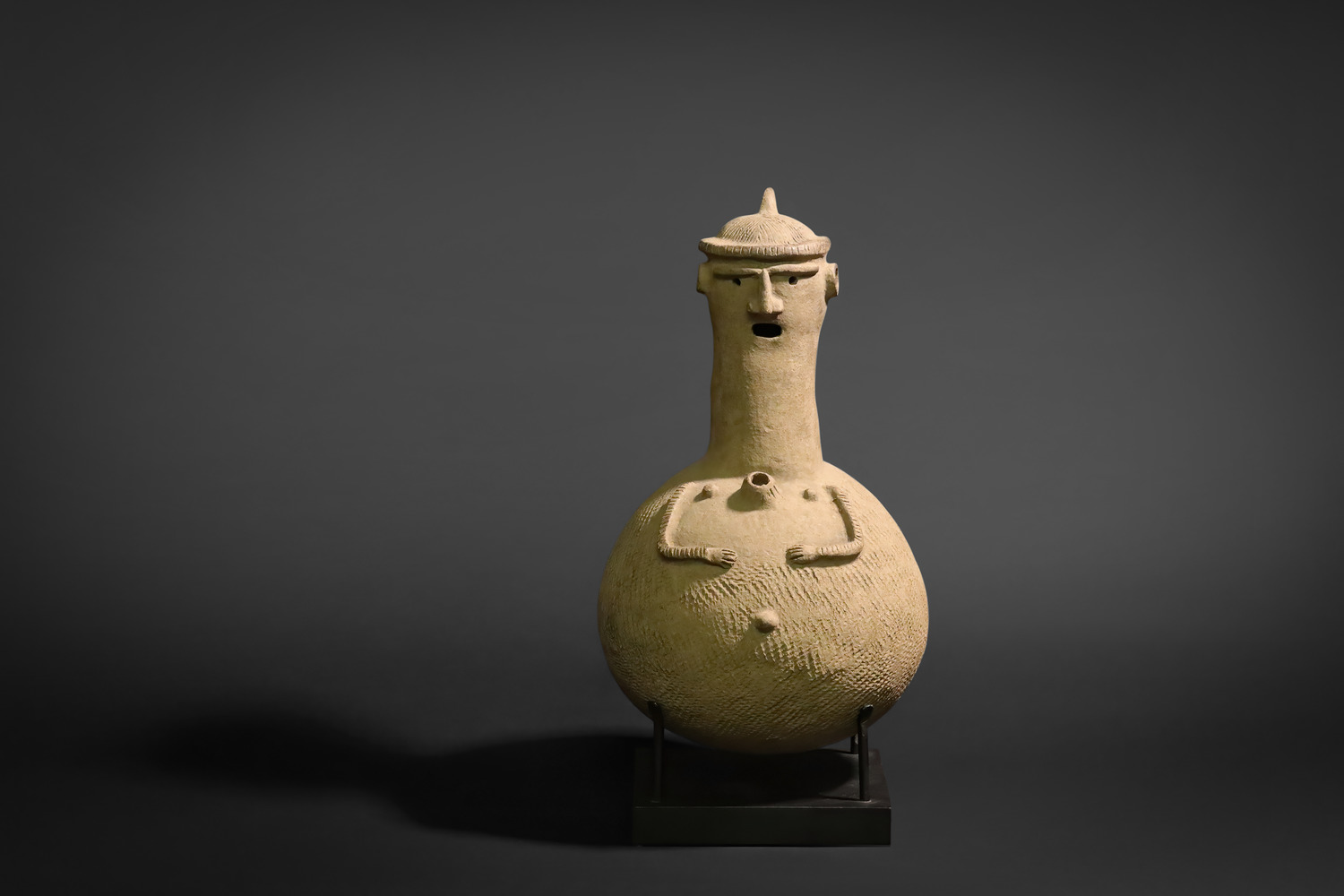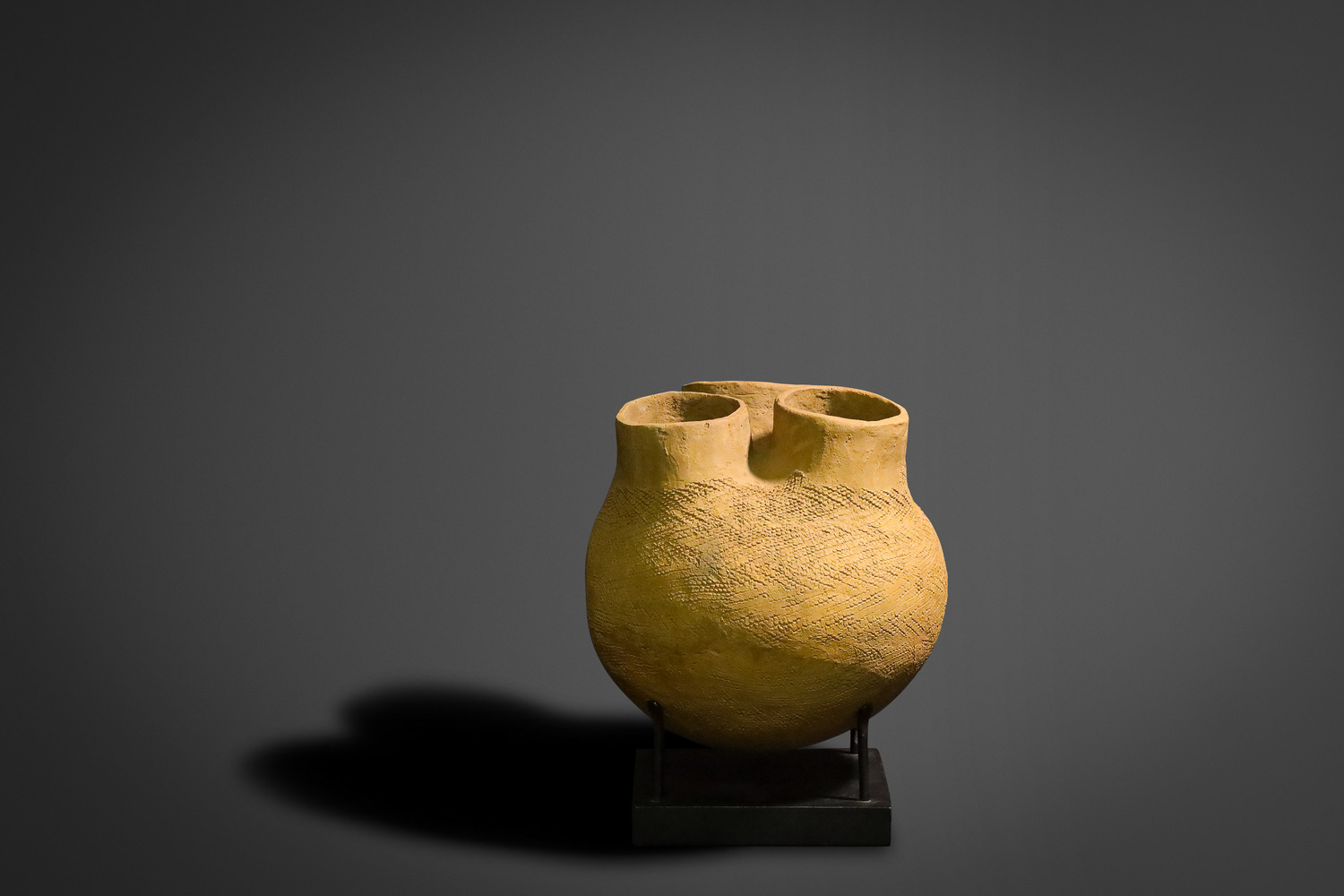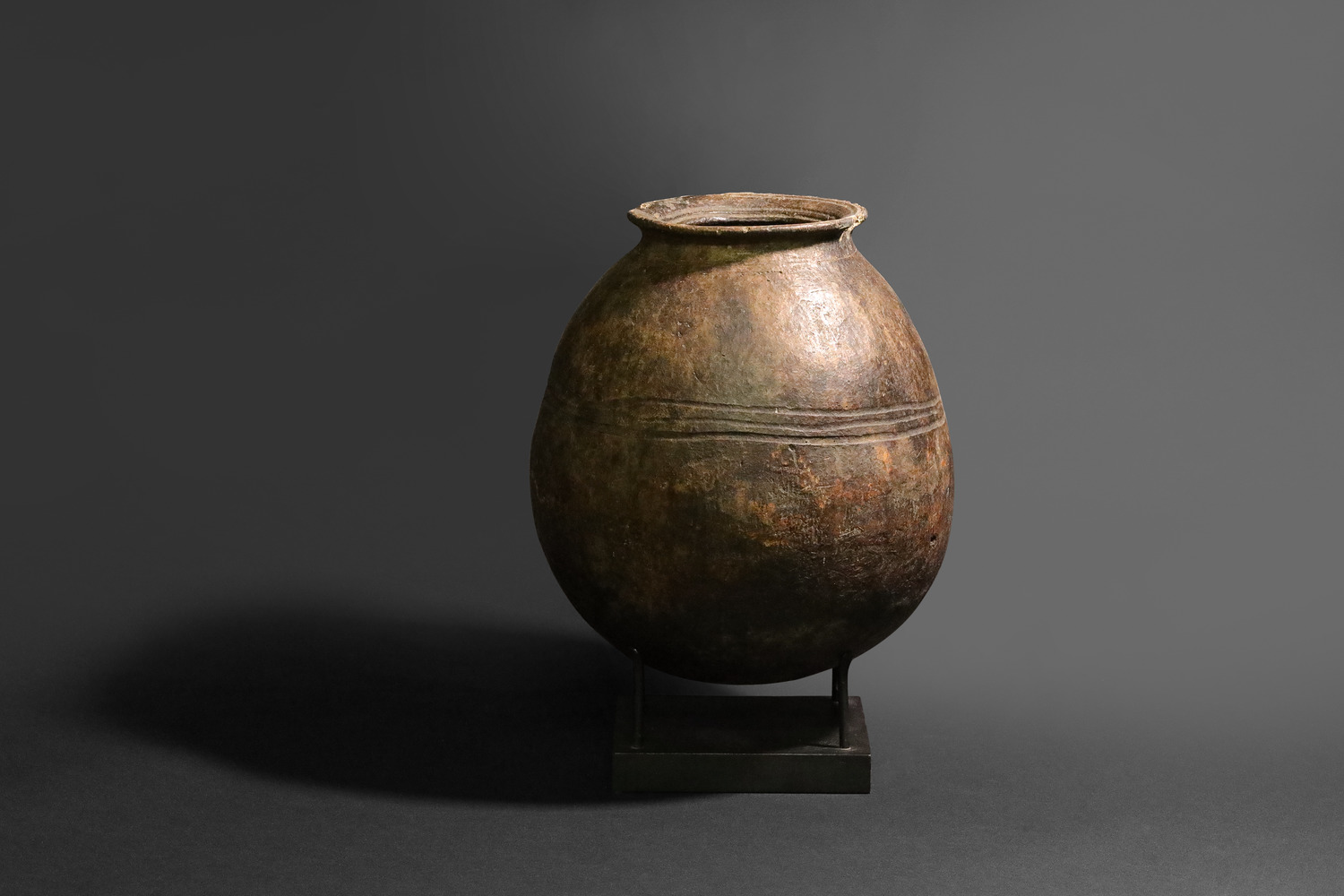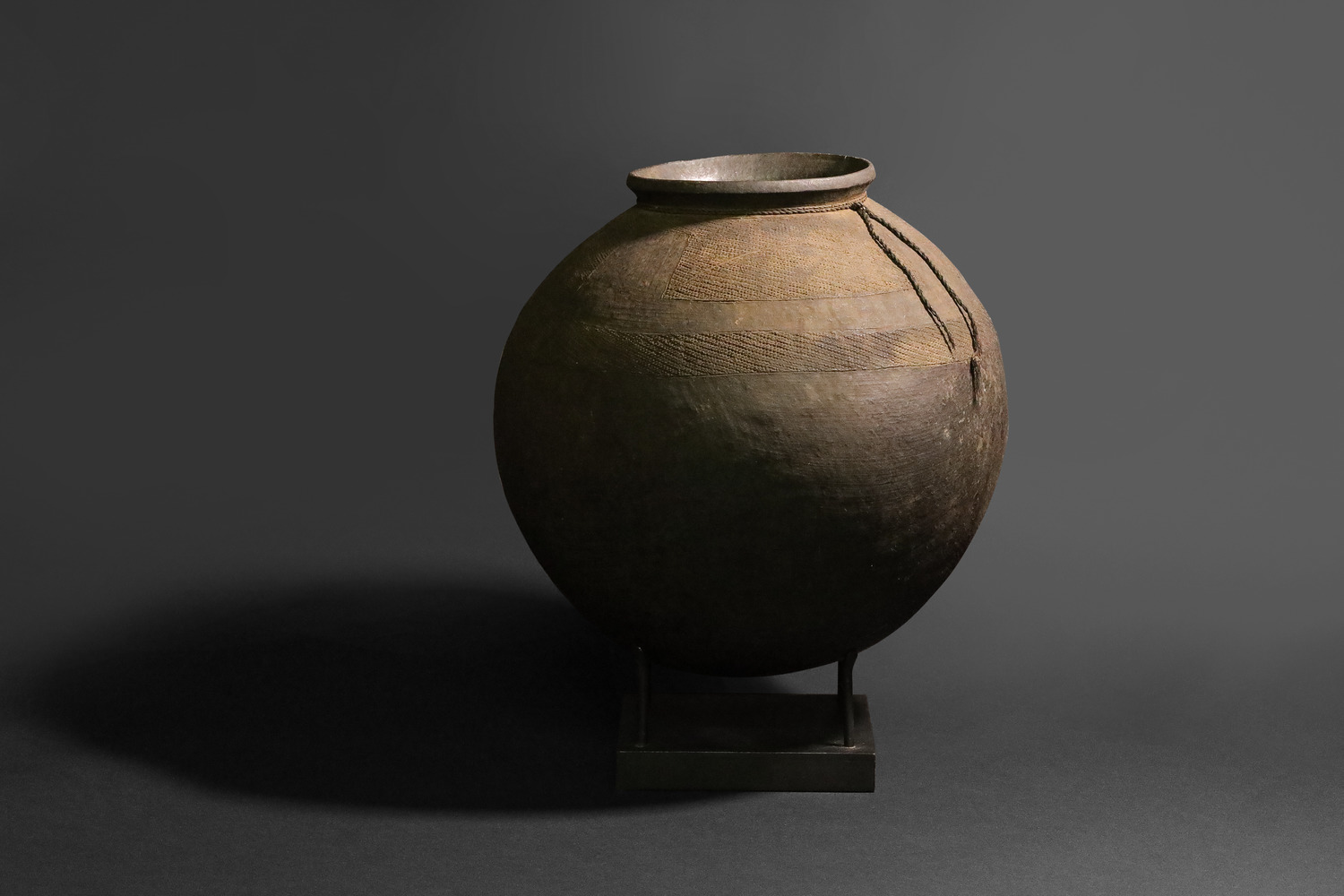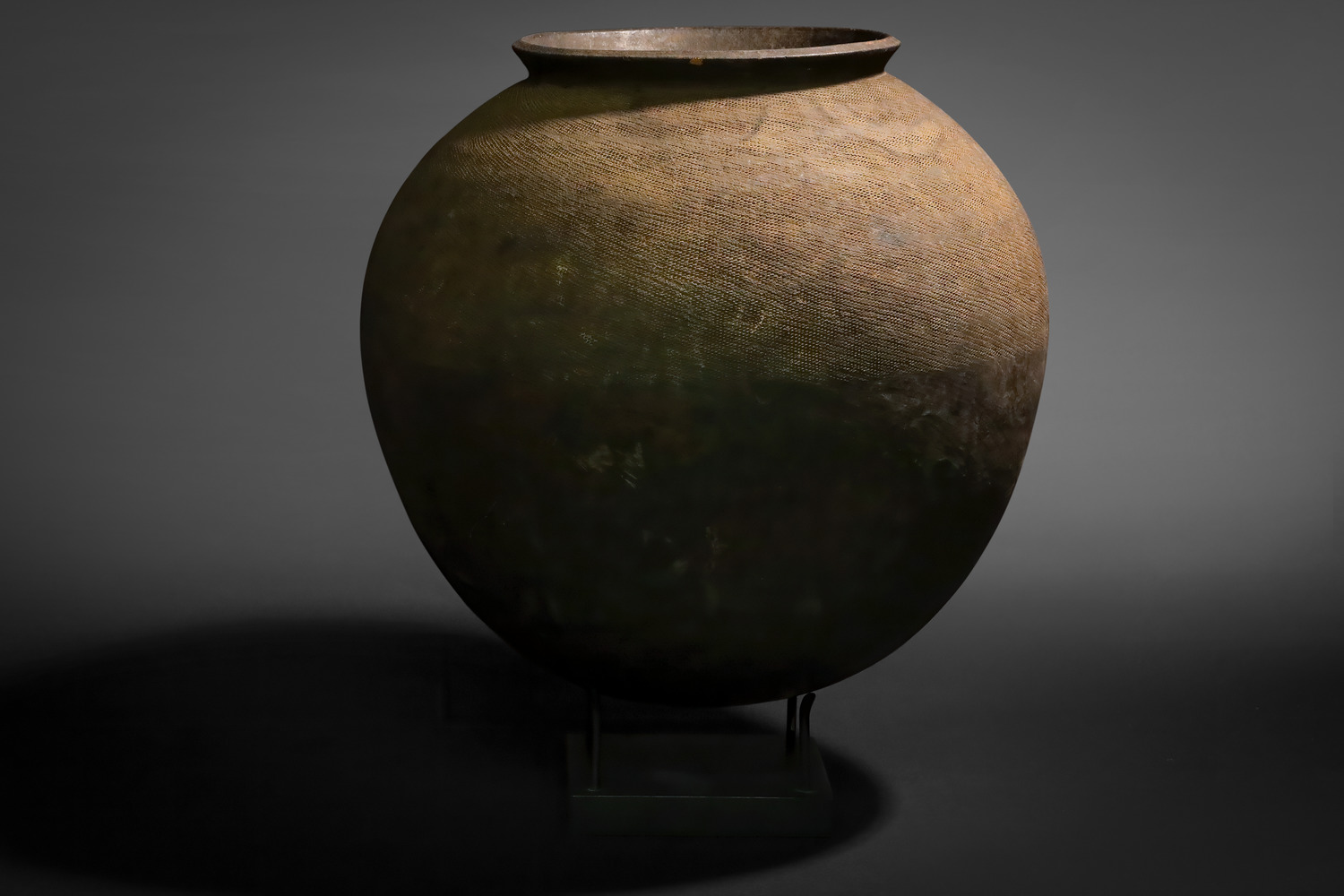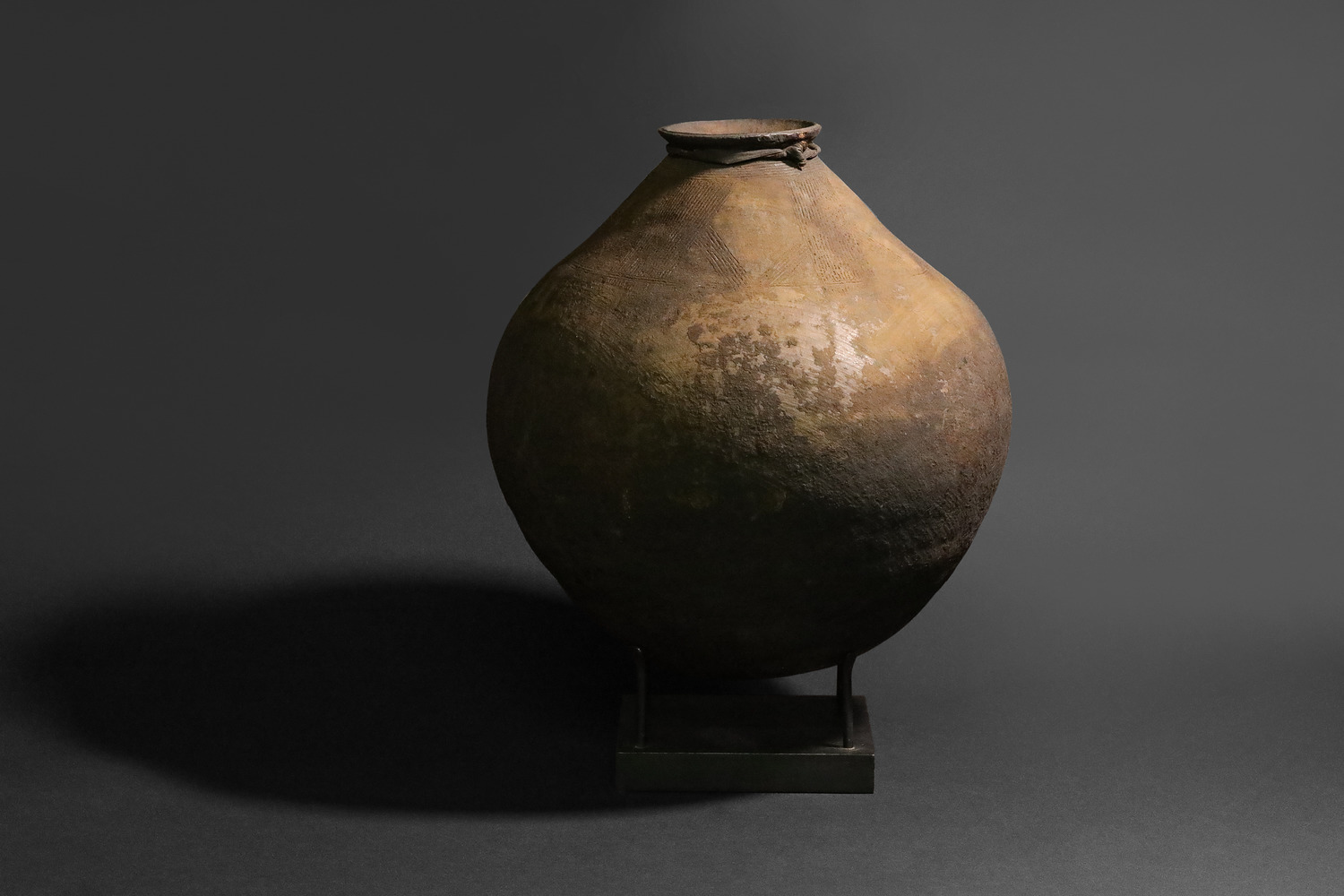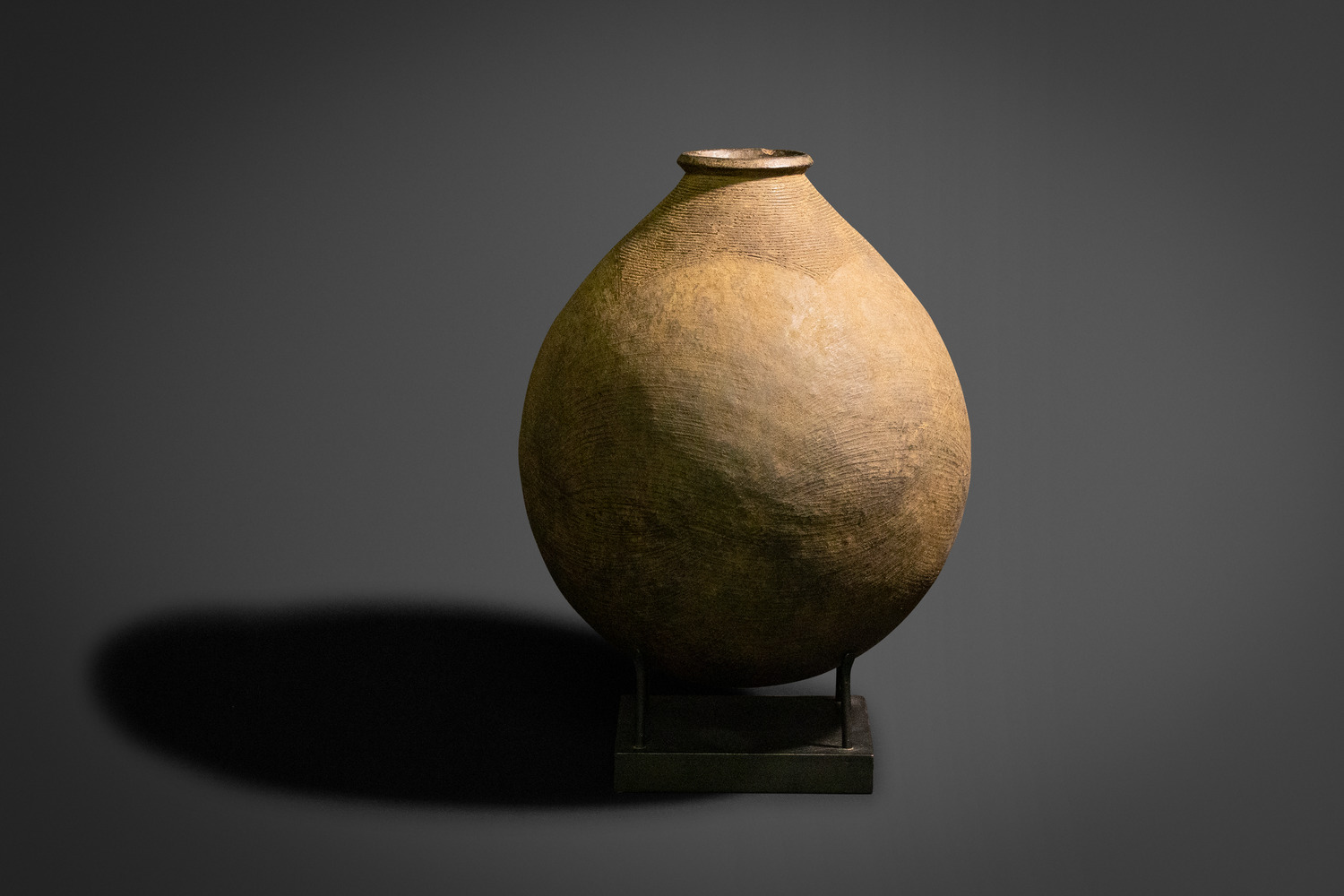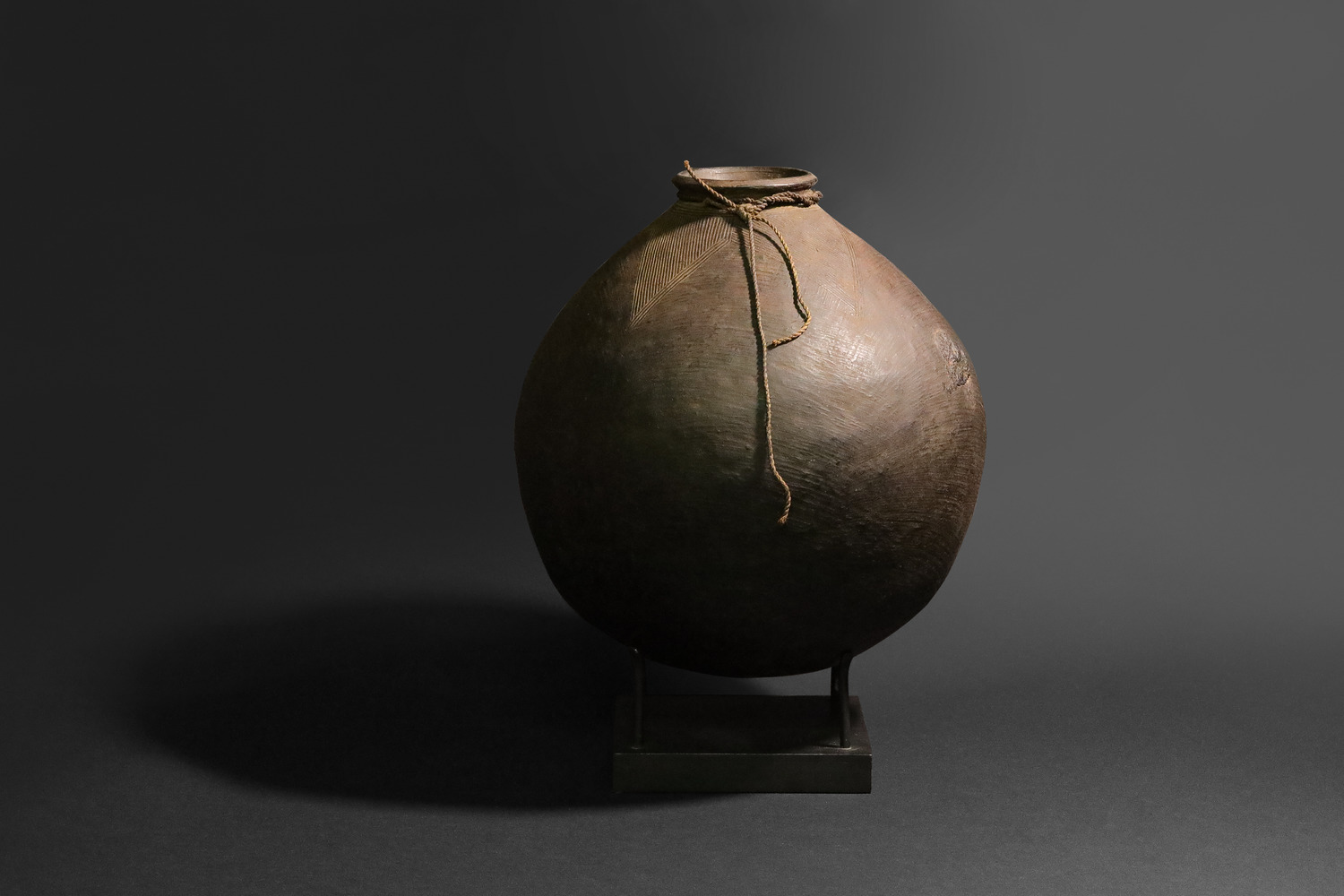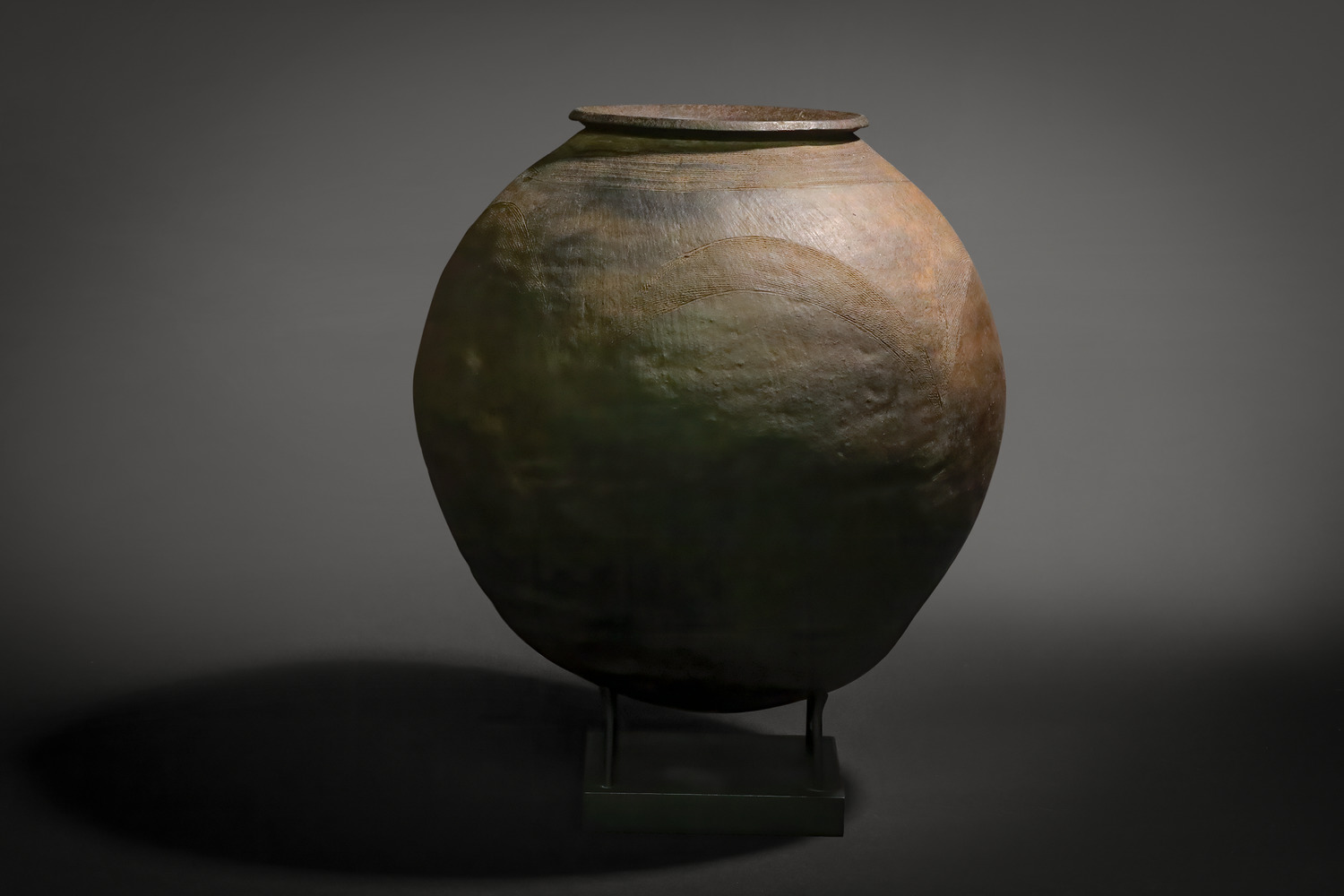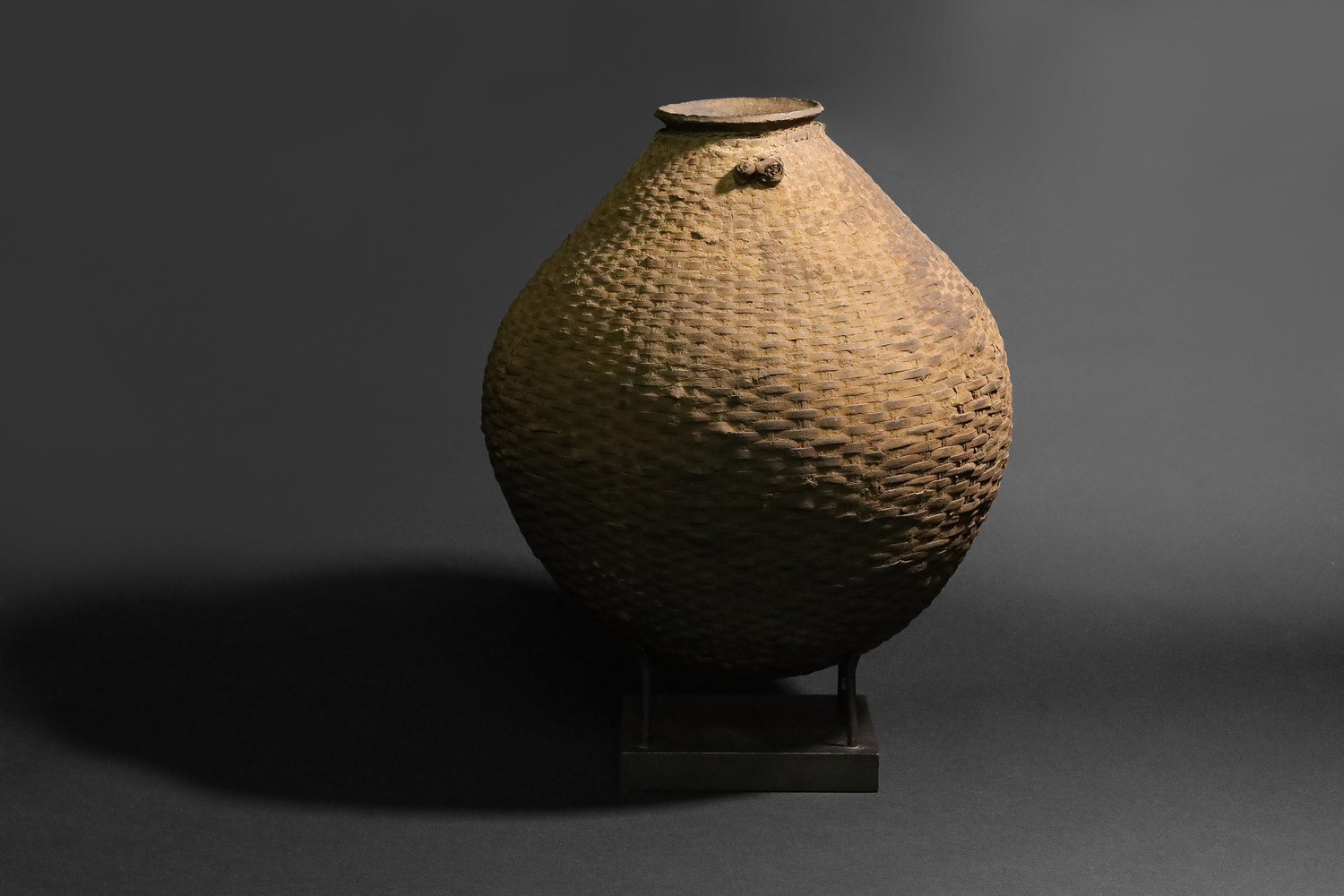Description
This commanding Kasena lidded vessel, both sculptural and architectural in its presence, is an exquisite example of the ceramic tradition practiced by the Kassena people of Tiébélé, in southern Burkina Faso. Defined by its globular body, sharply flared spout, and intricately incised surface motifs, the pot exemplifies a sophisticated visual language born from centuries of cultural continuity and environmental adaptation.
The vessel is distinguished by four symmetrical lugs positioned at its equatorial axis—each pierced to allow suspension. Such pots were traditionally hung from the rafters or from crossbeams in domestic or ritual enclosures, raised above ground to preserve the purity of their contents and shield them from pests and dust. This hanging method not only ensured hygiene and safety but also imbued the vessel with symbolic elevation, separating it from the mundane and aligning it with ancestral or sacred domains.
Used to store water, millet beer, or grain, these lidded pots often played a central role in ritual feasting, seasonal ceremonies, and fertility rites. The presence of a fitted lid—here seen removed to reveal a sharply carved, squared aperture—underscores the pot’s function as a secure, protected container, one associated with safeguarding both material and spiritual sustenance.
Ceramics among the Kassena are an exclusively female art, passed down matrilineally and deeply linked to rites of passage and domestic spirituality. The incised decoration, composed of delicate crosshatched bands that meet in triangular peaks, mirrors the geometric murals that adorn Tiébélé’s famed earthen compounds—each motif a signifier of identity, continuity, and protection. The vessel’s variegated surface, with earthen hues ranging from umber to deep greenish-black, reflects decades of use, oxidation, and natural aging, yielding a patina prized by connoisseurs of African art.
Elevated on a custom stand, the pot presents not only as a utilitarian artifact but as a work of abstract sculpture—its ovoid symmetry, textural contrasts, and subtle asymmetries suggesting affinities with modernist design. It stands as a testament to the elegance of Kassena form and the enduring dialogue between utility and aesthetic excellence.


